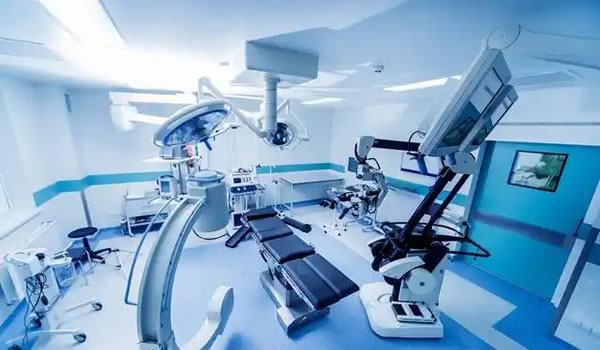Prostate cancer is one of the most common cancers among men globally, and its incidence is rising steadily in Asia as populations age and screening improves. While many prostate cancers grow slowly, others are aggressive and life-threatening. This article explores prostate cancer in Asian men, including risk factors, screening strategies, treatment options, and recovery approaches to improve quality of life and survival outcomes.

The Growing Burden of Prostate Cancer in Asia
- Global ranking: Prostate cancer is the second most common cancer in men worldwide.
- Asia’s rising incidence: Historically low, but cases in China, India, Japan, and Southeast Asia have risen significantly in the last two decades.
- Aging populations: Asia’s demographic shift means more men are living into their 60s and 70s, where prostate cancer risk is highest.
- Improved detection: Wider use of PSA testing and imaging means more diagnoses, both early and advanced.
Risk Factors for Prostate Cancer
1. Non-Modifiable Risks
- Age: Risk increases sharply after age 50.
- Family history: Men with a father or brother with prostate cancer have higher risk.
- Genetics: BRCA1/2 mutations and HOXB13 gene variants are relevant in Asia.
2. Modifiable Risks
- Diet: High consumption of red meat and dairy may increase risk.
- Obesity and inactivity: Linked to aggressive forms.
- Smoking and alcohol: Contribute to overall cancer burden.
3. Regional Considerations
- Japan & Korea: Higher awareness and better screening programs.
- China & India: Under-diagnosis common due to limited screening access.
- Southeast Asia: Rapidly rising burden with changing lifestyles.
Symptoms of Prostate Cancer
In early stages, prostate cancer often has no symptoms. When present:
- Difficulty starting or stopping urination.
- Weak urine flow or frequent urination at night.
- Blood in urine or semen.
- Erectile dysfunction or painful ejaculation.
- Back, hip, or bone pain (sign of advanced disease).
Because many of these overlap with benign prostatic hyperplasia (BPH), medical evaluation is critical.

Screening and Early Detection
- PSA test (Prostate-Specific Antigen): Blood test widely used but controversial due to false positives.
- Digital Rectal Exam (DRE): Simple, low-cost tool for detecting abnormalities.
- Imaging advances: Multiparametric MRI improves accuracy before biopsy.
- Biopsy: Confirms diagnosis; increasingly guided by MRI.
Guidelines in Asia
- Average risk: Men should discuss PSA testing at age 50.
- High risk (family history or BRCA mutations): Begin discussions at age 40–45.
- Intervals: Every 1–2 years depending on baseline PSA.
Treatment Options
1. Active Surveillance
- Recommended for low-risk cancers.
- Involves PSA tests, MRI, and repeat biopsies.
- Allows men to avoid treatment side effects while monitoring disease progression.
2. Surgery
- Radical prostatectomy: Complete removal of the prostate.
- Techniques: Open, laparoscopic, or robotic-assisted (increasingly available in Asia).
- Risks: Urinary incontinence, erectile dysfunction.
3. Radiotherapy
- External Beam Radiotherapy (EBRT): Common and effective.
- Brachytherapy: Radioactive seeds implanted in the prostate.
- Side effects: Urinary and bowel irritation.
4. Androgen Deprivation Therapy (ADT)
- Lowers testosterone to slow cancer growth.
- Used in advanced and high-risk localized disease.
- Side effects: Hot flashes, weight gain, bone thinning.
5. Advanced Therapies
- Chemotherapy: For advanced or hormone-resistant cases.
- Novel hormonal agents: Abiraterone, enzalutamide.
- Radioligand therapy (Lu-177 PSMA): Emerging in Asian cancer centers.

Recovery and Survivorship
Physical Recovery
- Urinary function: Pelvic floor exercises improve continence.
- Sexual health: Medications, vacuum devices, and counseling support erectile recovery.
- Fatigue: Regular exercise and balanced diet help restore energy.
Emotional and Social Recovery
- Depression and anxiety are common after diagnosis.
- Support groups and psychological counseling reduce isolation.
- Open communication with partners improves intimacy challenges.
Long-Term Monitoring
- PSA tests every 3–6 months initially, then annually.
- Imaging if PSA rises after treatment.
- Lifelong surveillance due to risk of recurrence.
Prevention Strategies
- Diet: More vegetables, fish, soy, and whole grains.
- Exercise: 150 minutes of moderate activity weekly.
- Weight management: Reduces risk of aggressive cancers.
- Quit smoking and limit alcohol.
- Screening awareness campaigns in Asia to encourage men to seek early evaluation.
Regional Highlights
- Japan: High use of robotic surgery and PSA screening.
- China: Rapid growth of urban cancer centers but rural gaps remain.
- India: Late diagnosis common; awareness campaigns increasing.
- Singapore & Hong Kong: Advanced radiotherapy and clinical trial participation.
Future Directions in Asia
- AI in diagnostics: Assisting pathologists with prostate biopsy analysis.
- Precision medicine: Genetic testing to personalize treatment.
- Telemedicine: Expanding access in rural Asia.
- Clinical trial networks: More Asian patients gaining access to new drugs.
Conclusion
Prostate cancer is no longer a rare disease in Asia; it is a growing health challenge that requires awareness, early detection, and access to advanced care. While many prostate cancers are indolent, aggressive types demand timely treatment.
Asian men and their families should prioritize screening discussions, healthy lifestyles, and informed treatment choices. With earlier detection and expanding treatment innovations, the future for prostate cancer care in Asia is becoming more hopeful.
prostate cancer Asia, PSA test Asia, prostate cancer treatment, prostate cancer recovery